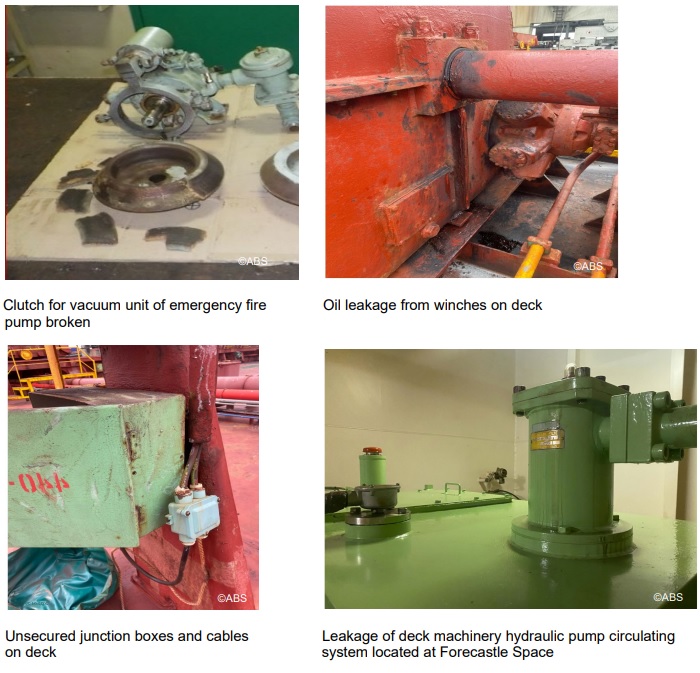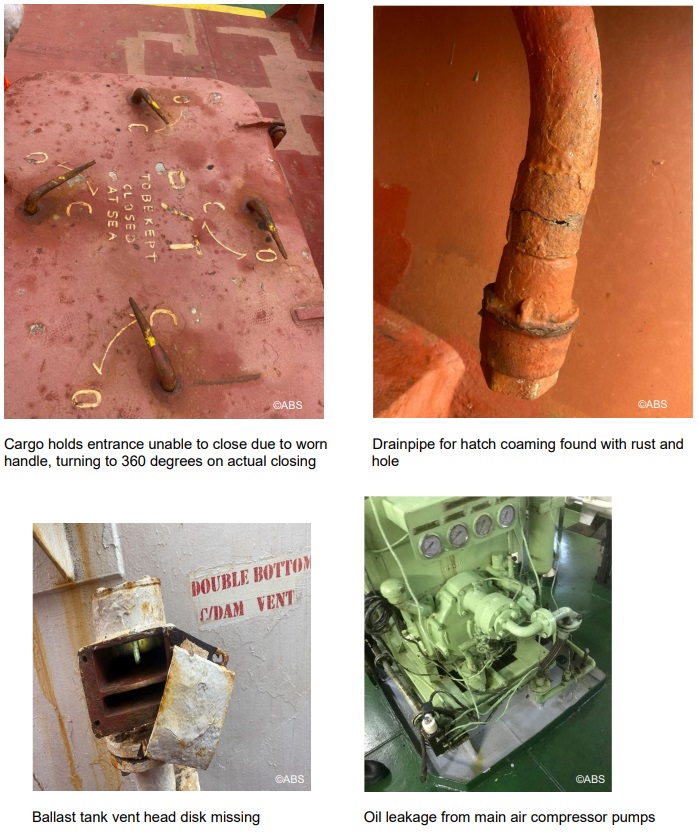COSCO SHIPPING Ports Limited (“COSCO SHIPPING Ports” or “CSP” or the “Company”, SEHK: 1199), the world’s leading ports operator, today announced interim results of the Company and its subsidiaries (the “Group”) for the 6 months ended 30 June 2022.
2022 Interim Results Highlights
- Total equity throughput increased by 5.3% YoY to 20,494,012 TEU
- Revenue increased by 24.7% YoY to US$704.6 million
- Gross profit increased by 33.3% YoY to US$197.7 million
- Share of profits from joint ventures and associates decreased by 8.5% YoY to US$160.2 million
- Profit attributable to equity holders of the Company increased by 0.8% YoY to US$177.0 million
- Declared a first interim dividend of US 2.128 cents per share, an increased of 0.4% YoY
FINANCIAL REVIEW
COSCO SHIPPING Ports’ 1H2022 revenue increased by 24.7% YoY to US$704.6 million. Gross profit increased by 33.3% YoY to US$197.7 million. Mainly due to increase in ASP, gross profit margin increased by 1.8 percentage points YoY to 28.1%. During the period, profit attributable to equity holders of the Company increased by 0.8% YoY to US$177.0 million.
OPERATIONAL REVIEW
- 1H 2022
- Total throughput was 63,210,330 TEU, +0.8% YoY
- Total equity throughput was 20,494,012 TEU, +5.3% YoY
- Total throughput from subsidiaries was 15,679,516 TEU, +38.0% YoY
Note: In 2021, the Company completed the acquisition of additional equity interest in Tianjin Container Terminal to make it a subsidiary and completed the disposal of Tianjin Euroasia Terminal. Tianjin Container Terminal had become a terminal in which the Group has controlling stakes since December 2021. Therefore, throughput of this terminal in 1H2022 was included in the throughput from the terminals in which the Group has controlling stakes, while in 1H2021, such throughput was categorized into the Group’s non-controlling terminals. After the disposal of Tianjin Euroasia Terminal in December 2021, throughput of this terminal was no longer included in the Group’s
non-controlling terminals.
China
During the period, total throughput of the terminals in China decreased by 1.9% YoY to 47,562,593 TEU (1H2021: 48,471,403 TEU) and accounted for 75.2% of the Group’s total throughput. Total equity throughput of terminals in China increased by 2.4% YoY to 14,259,249 TEU (1H2021: 13,246,438 TEU) and accounted for 69.6% of the Group’s total equity throughput.
Bohai Rim
During the period, total throughput of the Bohai Rim region decreased by 3.5% YoY to 20,767,708 TEU (1H2021: 21,511,420 TEU) and accounted for 32.9% of the Group’s total throughput. Total equity throughput of the Bohai Rim region increased by 23.3% YoY to 5,809,679 TEU (1H2021: 4,713,238 TEU) and accounted for 28.3% of the Group’s total equity throughput. Benefiting from increased domestic container volume, total throughput of Dalian Container Terminal Co., Ltd. (“Dalian Container Terminal”) increased by 10.9% YoY to 1,869,273 TEU (1H2021: 1,686,036 TEU). Total throughput of Tianjin Container Terminal decreased by 3.3% YoY to 4,318,871 TEU (1H2021: 4,466,048 TEU).
Yangtze River Delta
During the period, total throughput of the Yangtze River Delta region decreased by 16.0% YoY to 6,483,243 TEU (1H2021: 7,718,194 TEU) and accounted for 10.2% of the Group’s total throughput. Total equity throughput of the Yangtze River Delta region decreased by 14.8% YoY to 1,817,298 TEU (1H2021: 2,133,262 TEU) and accounted for 8.9% of the Group’s total equity throughput. Total throughput of Nantong Tonghai Port Co., Ltd. decreased by 8.3% YoY to 678,597 TEU (1H2021: 739,907 TEU), mainly due to the negative impact on domestic and foreign trade caused by the pandemic in the surrounding areas. Due to an outbreak in COVID-19 cases earlier this year in Shanghai which affected terminal operations and container volume, total throughput of Shanghai Mingdong Terminal decreased by 30.7% YoY to 2,358,620 TEU (1H2021: 3,405,517 TEU).
Southeast Coast and Others
During the period, total throughput of the Southeast Coast and Others region increased by 10.4% YoY to 3,280,185 TEU (1H2021: 2,971,482 TEU) and accounted for 5.2% of the Group’s total throughput.
Total equity throughput of Southeast Coast and Others region increased by 8.6% to 1,841,317 (1H2021: 1,695,884 TEU) and accounted for 9.0% of the Group’s total equity throughput. Driven by increased volume from the OCEAN Alliance, Xiamen Ocean Gate Terminal and the total throughput increased by 12.5% YoY to 1,407,182 TEU (1H2021: 1,250,465 TEU).
Pearl River Delta
During the period, total throughput of the Pearl River Delta region increased by 1.5% YoY to 13,866,357 TEU (1H2021: 13,662,407 TEU) and accounted for 21.9% of the Group’s total throughput. Total equity throughput of Pearl River Delta region decreased by 1.3% to 3,974,883 TEU (1H2021: 4,025,879 TEU) and accounted for 19.4% of the Group’s total equity throughput. Total throughput of Guangzhou South
China Oceangate Terminal decreased by 0.9% to 2,814,568 TEU (1H2021: 2,840,610 TEU). Total throughput of Yantian Terminals increased by 6.7% YoY to 6,920,830 TEU (1H2021: 6,486,265 TEU).
Southwest Coast
During the period, total throughput of the Southwest Coast region increased by 21.4% YoY to 3,165,100
TEU (1H2021: 2,607,900 TEU) and accounted for 5.0% of the Group’s total throughput, which was mainly benefited from the increased trade activities between China and Southeast Asia and the increased transshipment volume between Beibu Gulf and Hainan. Total equity throughput of Southwest Coast region increased by 20.3% to 816,072 TEU (1H2021: 678,175 TEU) and accounted for 4.0% of the Group’s total equity throughput.
Overseas
During the period, total throughput of the Overseas region increased by 9.9% YoY to 15,647,737 TEU (1H2021: 14,239,304 TEU) and accounted for 24.8% of the Group’s total throughput. Total equity throughput of Overseas region increased by 0.3% to 6,234,763 TEU(1H2021: 6,218,857 TEU) and accounted for 30.4% of the Group’s total equity throughput. The volume from ad-hoc shipping calls of CSP Zeebrugge Terminal increased and the total throughput increased by 26.4% YoY to 547,314 TEU (1H2021: 433,150 TEU). Driven by an increase in container volume contributed by the parent company and an increase in local transshipment container throughput, total throughput of CSP Abu Dhabi Terminal L.L.C. increased by 25.1% YoY to 413,057 TEU (1H2021: 330,308 TEU). Since the punctuality rate of shipping routes generally declined as a result of the continuous congestion at certain overseas ports, total throughput of Piraeus Terminal decreased by 9.6% YoY to 2,144,064 TEU (1H2021: 2,370,862 TEU).
Prospects
Although economic activities around the world in the first half of 2022 were still affected by the COVID-19 pandemic, China’s foreign trade achieved steady growth in the first half of the year.
According to statistics from the General Administration of Customs, China’s total import and export value of goods amounted to RMB19.8 trillion with a YoY increase of 9.4%. Export value amounted to RMB11.14 trillion with a YoY increase of 13.2%, while import value amounted to RMB8.66 trillion with a YoY increase of 4.8%.
Leveraging on its leading position in the global ports operator industry, the Company will continue to grasp strategic development opportunities by adopting a series of measures to increase revenue per TEU, continue to strengthen sales and marketing, actively increase volume and introduce new routes from various shipping companies to continuously increase revenue; accelerate the extension of supply chain to increase growth opportunities; accelerate the development of information technology and seize the opportunities brought by digitalization.
The Group will continue to identify potential projects, tap into strategic terminals in which it has controlling stakes and highly profitable non-subsidiary terminals to build a balanced global terminal network. In particular, the Company will continue to consolidate its domestic port resources, thereby restructuring its terminals and improving the quality of assets.
The Group will continue to grasp the opportunities to expand its global terminal network and focus on emerging markets with high future growth potential such as Southeast Asia, the Middle East and Africa to enhance the regional diversification of its terminal asset portfolio, in an attempt to provide shipping companies with cost efficient and high-quality terminal services and promote the growth of container volume and revenue.
To achieve better quality and efficiency of its terminal asset portfolio, strengthen the management and control over terminals, and build the core competitiveness of the Company, the Group will continue to work towards streamlining costs and increasing ASP. The Group will keep promoting technological innovation and accelerating the application of information technology and has adopted three main strategies to build a comprehensive platform to improve efficiency including the unification of its terminal operating systems (TOS), the construction of the management information system (MIS)
Source: COSCO SHIPPING Ports Limited









